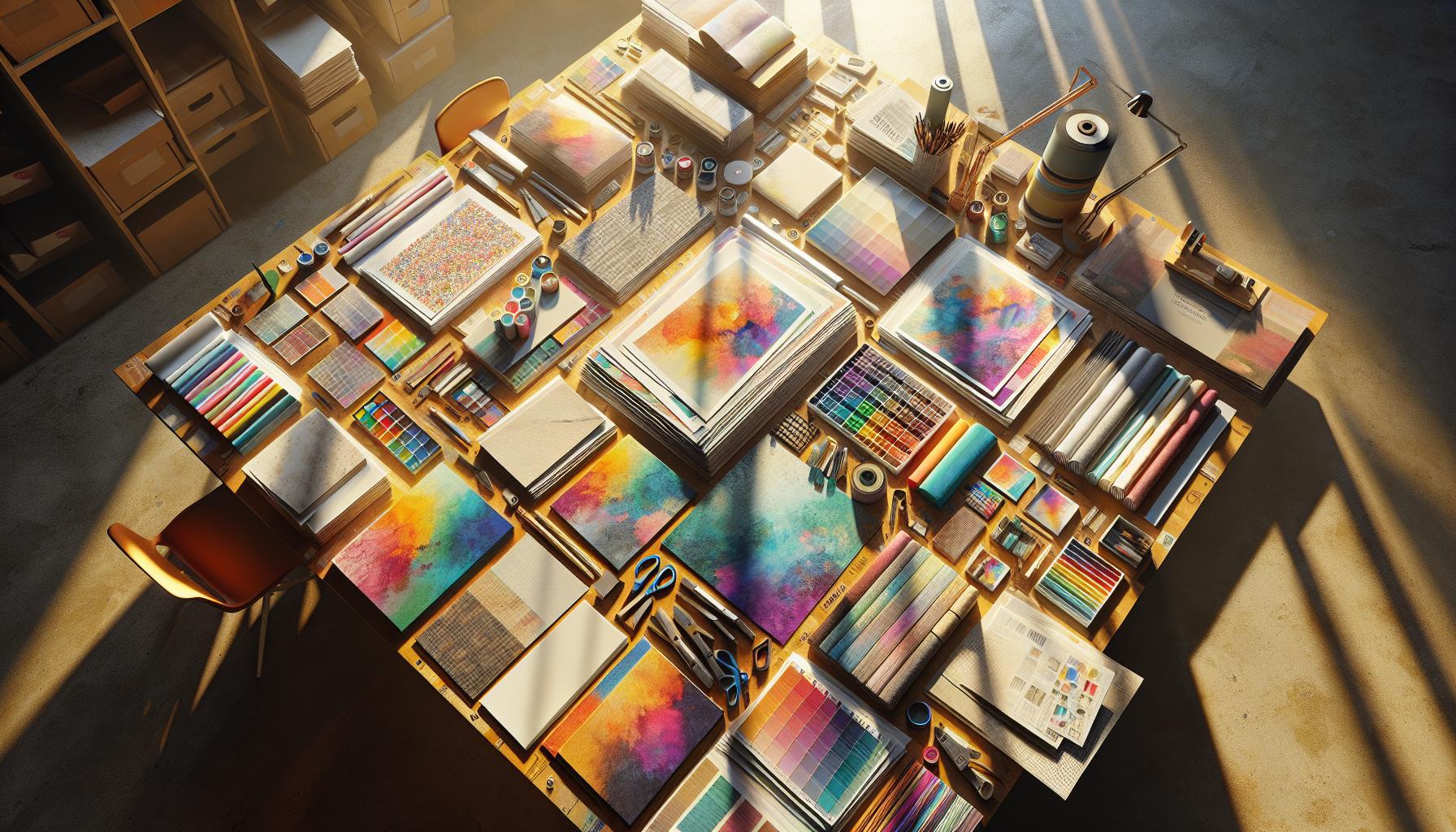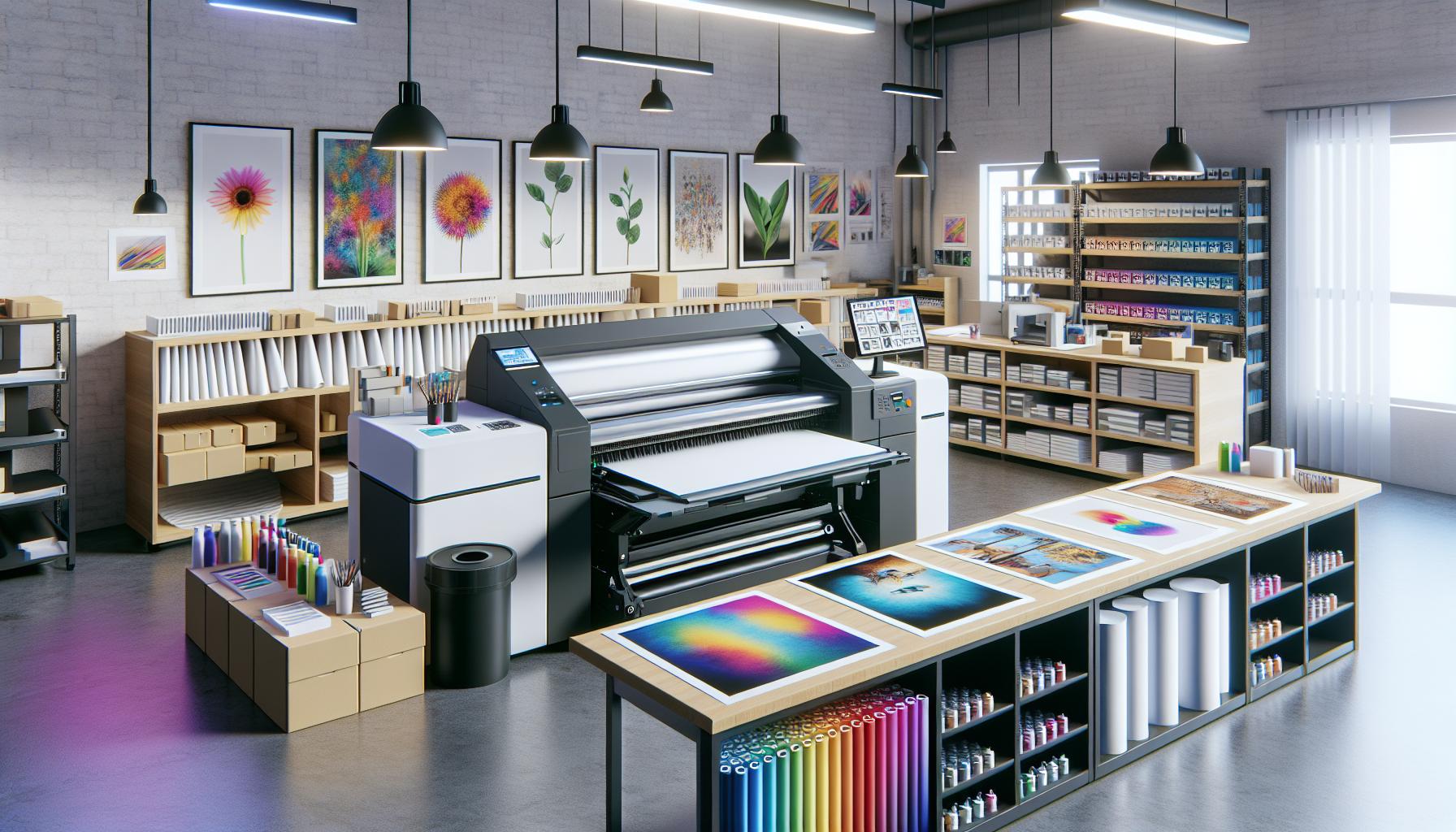Digital art has revolutionized creativity but there’s something magical about holding a physical print of your masterpiece. Whether you’re an aspiring artist looking to sell prints or a hobbyist wanting to decorate your space turning pixels into prints can feel like navigating a maze of options.
From choosing the right paper to selecting a printer that won’t drain your savings printing digital art doesn’t have to be complicated. The process might seem daunting at first but with the right knowledge and tools anyone can transform their digital creations into stunning physical artwork that captures every detail and color with precision.
Understanding Digital Art File Preparation
Digital art file preparation establishes the foundation for high-quality prints that match the original artwork’s appearance. Proper preparation ensures accurate color representation, crisp details and optimal print results.
Color Profiles and Resolution Requirements
Digital art files require specific color profile settings for accurate print reproduction. The RGB color profile works for digital displays while CMYK color profiles suit professional printing. Images need a minimum resolution of 300 DPI (dots per inch) for sharp prints, with larger prints demanding up to 600 DPI. Professional print labs accept ICC color profiles that ensure consistent colors across different devices. Artists adjust brightness levels 10-15% higher than screen display to compensate for the natural darkening that occurs during printing.
| Print Size (inches) | Minimum Resolution (pixels) |
|---|---|
| 8×10 | 2400×3000 |
| 11×14 | 3300×4200 |
| 16×20 | 4800×6000 |
| 24×36 | 7200×10800 |
How to Print Digital Art
Selecting an appropriate printing method ensures optimal reproduction of digital artwork. The choice between different printing technologies impacts color accuracy, print longevity and overall quality.
Inkjet vs. Laser Printing
Inkjet printers create images by spraying microscopic droplets of liquid ink onto paper. These printers excel at producing smooth color gradients with a wide color gamut, making them ideal for photographs and detailed artwork. The prints feature rich, vibrant colors with excellent detail reproduction.
Laser printers use toner powder fused to paper through heat. They produce sharp text and solid colors but struggle with subtle color transitions. While laser prints offer durability and water resistance, they lack the color depth needed for professional art reproduction.
| Feature | Inkjet | Laser |
|---|---|---|
| Color Range | Wide gamut | Limited |
| Cost per Print | $0.20-0.60 | $0.05-0.15 |
| Print Speed | 4-6 pages/min | 15-25 pages/min |
| Best Use | Photos & Art | Text & Graphics |
Giclee Printing Process
Giclee printing represents the highest standard in digital art reproduction. The process uses professional-grade inkjet printers with archival pigment-based inks on fine art papers. These specialized printers feature 8-12 ink colors, producing precise color matching with enhanced blacks whites.
The process incorporates calibrated color management systems to ensure consistency across prints. Giclee prints maintain color accuracy for 75+ years under proper display conditions. Museums galleries frequently use this method for archival-quality art reproductions.
| Giclee Specifications | Details |
|---|---|
| Minimum Resolution | 300 DPI |
| Color Channels | 8-12 inks |
| Paper Types | Acid-free fine art |
| Print Longevity | 75+ years |
Selecting Paper and Print Materials

The selection of printing materials directly impacts the final appearance of digital art prints. The right combination of paper or surface enhances color vibrancy, texture depth, and print longevity.
Fine Art Paper Options
Fine art papers create museum-quality prints with distinct surface characteristics. Cotton rag papers, containing 100% cotton fiber, deliver exceptional color depth and archival quality lasting 100+ years. Photo papers with glossy finishes maximize color saturation and contrast, making them optimal for vivid digital illustrations. Textured watercolor papers add dimensional elements to prints through their natural grain patterns. Somerset Velvet paper produces rich blacks and subtle tonal variations, while Hahnemühle Photo Rag maintains precise color accuracy with a matte finish.
- Poly-cotton canvas: 65/35 blend for optimal stretch
- Fine art canvas: 100% cotton for maximum archival quality
- Metallic canvas: Pearl finish for iridescent effects
- Natural white canvas: Neutral base for accurate color reproduction
Professional Printing Services vs. Home Printing

The decision between professional printing services and home printing equipment involves balancing cost, quality, and convenience factors. This comparison helps artists make informed choices based on their specific needs and production volume.
Cost Comparison
Professional printing services charge $15-30 per square foot for fine art prints, with bulk order discounts available. Initial investment for home printing requires $800-2,000 for a professional-grade printer, plus ongoing costs for ink ($200-400 per set) and paper ($50-100 per pack). A cost analysis reveals that home printing becomes cost-effective after producing 50-100 prints, depending on size and materials. Professional services eliminate equipment maintenance costs, calibration requirements and paper storage considerations while offering specialized printing options like metallic inks or oversized formats.
Quality Considerations
Professional print shops utilize industrial-grade printers with 8-12 color channels, producing wider color gamuts than typical 4-6 channel home printers. Commercial facilities maintain strict color calibration protocols, ensuring consistent output across multiple print runs. Professional printers offer specialized options including custom ICC profiles, spot color matching and archival certification. Home printing provides immediate results with complete control over the printing process, though achieving professional-level quality requires expertise in color management, printer maintenance and material handling. The quality gap becomes noticeable in detailed gradients, shadow definition and color accuracy, particularly in large format prints exceeding 17 inches.
Best Practices for Print Settings
Print settings optimization ensures accurate color reproduction and precise sizing for digital art prints. Proper configuration of these settings creates professional-quality results that match the artist’s vision.
Color Management
Digital art prints require specific color profile settings in the printer dialog. ICC profiles establish accurate color matching between the screen display and printed output. Adobe RGB or ProPhoto RGB color spaces produce wider color gamuts for fine art printing. Setting the black point compensation maintains shadow detail while preventing color shifts. Print drivers need calibration to match specific paper profiles, enabling consistent color reproduction across different media types. Color management software tools measure and adjust output to achieve delta-E values below 2.0 for optimal accuracy.
Print Size and Scaling
Print dimensions affect the final resolution and clarity of digital artwork. A resolution table guides optimal sizing:
| Print Size (inches) | Minimum Resolution (DPI) | Optimal Resolution (DPI) |
|---|---|---|
| 8×10 | 240 | 300 |
| 11×14 | 300 | 360 |
| 16×20 | 360 | 480 |
| 24×36 | 480 | 600 |
Custom scaling maintains proper proportions without distortion. The interpolation method impacts image quality during resizing – bicubic smoother works best for enlargements while bicubic sharper excels at reductions. Setting the correct physical dimensions in the print dialog ensures accurate sizing relative to the canvas or paper selection.
Protecting and Preserving Your Printed Artwork
Digital art prints require specific care techniques to maintain their quality and extend their lifespan. The preservation process begins immediately after printing and continues throughout the storage and display phases.
Handling Fresh Prints
Fresh prints remain sensitive to physical contact for 24-48 hours after production. Cotton gloves protect prints from natural oils and fingerprints during handling. Placing prints flat on a clean surface allows proper drying time, preventing ink smudging or paper warping. A designated drying rack with adequate spacing between prints ensures optimal air circulation. Fine art prints benefit from a 24-hour settling period before mounting or framing to allow complete ink absorption into the paper fibers.
Storage and Display Tips
Archival storage boxes protect prints from light damage dust and environmental fluctuations. The ideal storage environment maintains 45-50% humidity at 70°F (21°C). UV-protective glass or acrylic shields mounted prints from harmful rays reducing color fading by 97%. Rotating displayed prints every 6 months prevents uneven exposure to light. Storage locations away from direct sunlight heating vents or humid areas extend print longevity. Acid-free mats create a protective barrier between prints and framing materials preserving color integrity for 75+ years.
| Storage Condition | Recommended Range |
|---|---|
| Temperature | 68-72°F (20-22°C) |
| Humidity | 45-50% |
| Light Exposure | <5000 lux |
| UV Protection | 97-99% |
Right Combination of Tools And Techniques
Transforming digital art into physical prints requires attention to detail and the right combination of tools and techniques. Whether choosing professional services or investing in home printing equipment the key lies in understanding file preparation color management and material selection.
Artists who take time to master these elements will consistently produce gallery-quality prints that truly represent their digital creations. The journey from screen to print might seem daunting at first but the satisfaction of holding a perfectly printed piece makes it worthwhile. With proper care and preservation these prints will continue to showcase digital artwork for generations to come.
